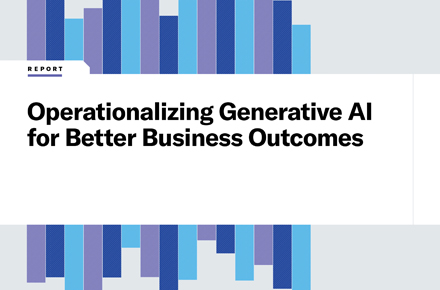Data governance: A strategic asset builder for businesses of every scale
April 15, 2025 / Sundar Natarajan
Short on time? Read the key takeaways:
- High-quality data that is secure, current and useable externally and internally can be a highly strategic asset.
- Cleaning your data involves thoroughly reviewing it for inaccuracies and redundancies.
- Organizing, managing and documenting all your data through cataloging gives you better visibility into your assets so it’s more usable.
- Turning your employees into data advocates can support your data governance efforts. And this starts at the top with your organization’s chief data officer.
Data without action is like money stuffed under a mattress and forgotten: a wasted opportunity. However, with the proper governance, your data can become your top strategic asset.
Data governance is a collection of roles, policies, processes, standards and metrics that ensure data is used effectively and efficiently. This ongoing process helps you achieve your data goals but relies on high-quality data.
High-quality, clean data is data you can trust. It’s secure, current and useable externally and internally. You don’t have to worry about violating privacy laws when using it or introducing ethical issues in your organization.
Most organizations want to attain data quality, and some do some things right. However, this is usually not by design. Implementing a strong data governance framework can improve your data quality, security and transparency. It should also be part of your data modernization strategy.
If you prioritize a few best practices, data governance refines your data into a valuable asset.
Cleaning your data so it's trustworthy
Strategic and operations divisions are increasingly recognizing data’s power. Data governance lets you realize its full potential. You may have already introduced measures that are good data governance practices.
Take data cleaning. This entails storing data from multiple sources in a data warehouse or data lakehouse for processing. Like crude oil, raw data must be processed and refined to extract its true value. Otherwise, it can be risky to use.
When cleaning data, you should take a few crucial steps:
- Review the data to identify any missing, duplicate or inconsistent values using data profiling or other tools.
- Decide how to handle missing data, whether removing rows with missing values, finding ways to complete them or something else.
- Remove duplicate records so each entry is unique and ensure consistency throughout your dataset in your data formats, such as date and currency.
- Fix misspellings, inaccurate values and other data inaccuracies.
- Scale numerical data, standardize measurement units or take other steps to normalize data to avoid inconsistencies.
- Validate your data’s accuracy by comparing the cleaned data to the original dataset to catch new errors introduced during the process.
After ensuring your data is clean, you’re ready to gain complete visibility.
Cataloging all your data’s dimensions
It’s impossible to overstate the value of quality data – especially given AI initiatives. Data can guide your strategic and operational decisions, and the governance process starts by learning its multiple dimensions.
To optimize and govern your data, you must first have visibility into it. Data cataloging involves organizing, managing and documenting your data assets.
This makes it more discoverable and usable. Data cataloging is a key aspect of data governance that improves data quality, strengthens data security and promotes data compliance. It requires asking the right questions about your data.
- Is this data used externally or internally?
- What’s the data’s lineage, and who owns it?
- How is it structured?
- How is the data used, and who are the stakeholders?
- Does it have privacy rules associated with it?
- Is it compliant with government regulations and company guidelines?
Answering these important questions through data cataloging can help give your users a unified view of data assets. And those users are an essential part of your data governance program.
Turn employees into data governance advocates
Your people are a significant component of data governance. After all, they benefit from access to a single source of truth, which is central to good data governance. This could be a data platform or dashboard where everyone within your organization can access data analytics and insights.
Data insights can guide them in developing marketing initiatives, customer outreach campaigns and other programs. It can help lower costs, contribute to sustainability goals, increase customer engagement and tackle other objectives.
Giving employees self-service access to high-quality, trusted data at the right time is a step toward turning them into data advocates. You can encourage this by training employees on data governance tools and technologies and identifying people who can act as data stewards.
Stewardship starts at the top. Larger organizations may have the budget to appoint a dedicated chief data officer to drive data governance. At smaller organizations, one executive may play multiple roles, such as a chief technology officer, chief information officer or chief marketing officer acting as a data leader.
From there, it is helpful to appoint a data steward for each business unit, such as marketing, sales and product. The person in this role acts as a data custodian and owner, overseeing data quality and ensuring their unit follows data governance principles.
Implement data governance practices
Cleaning and cataloging your data and developing data champions can advance your data governance. This enables you to realize the full strategic value of your data.
The Unisys data governance operating methodology involves multiple steps that help you attain a comprehensive view of your data. It takes you from identifying relevant data sources and key data governance stakeholders to data profiling and discovery and developing a unified view of data assets.
Your data can become a trusted enterprise asset within your organization. Read how the Unisys Data Governance and Management solution can support your data governance efforts and learn strategies for preparing your data for AI.




















